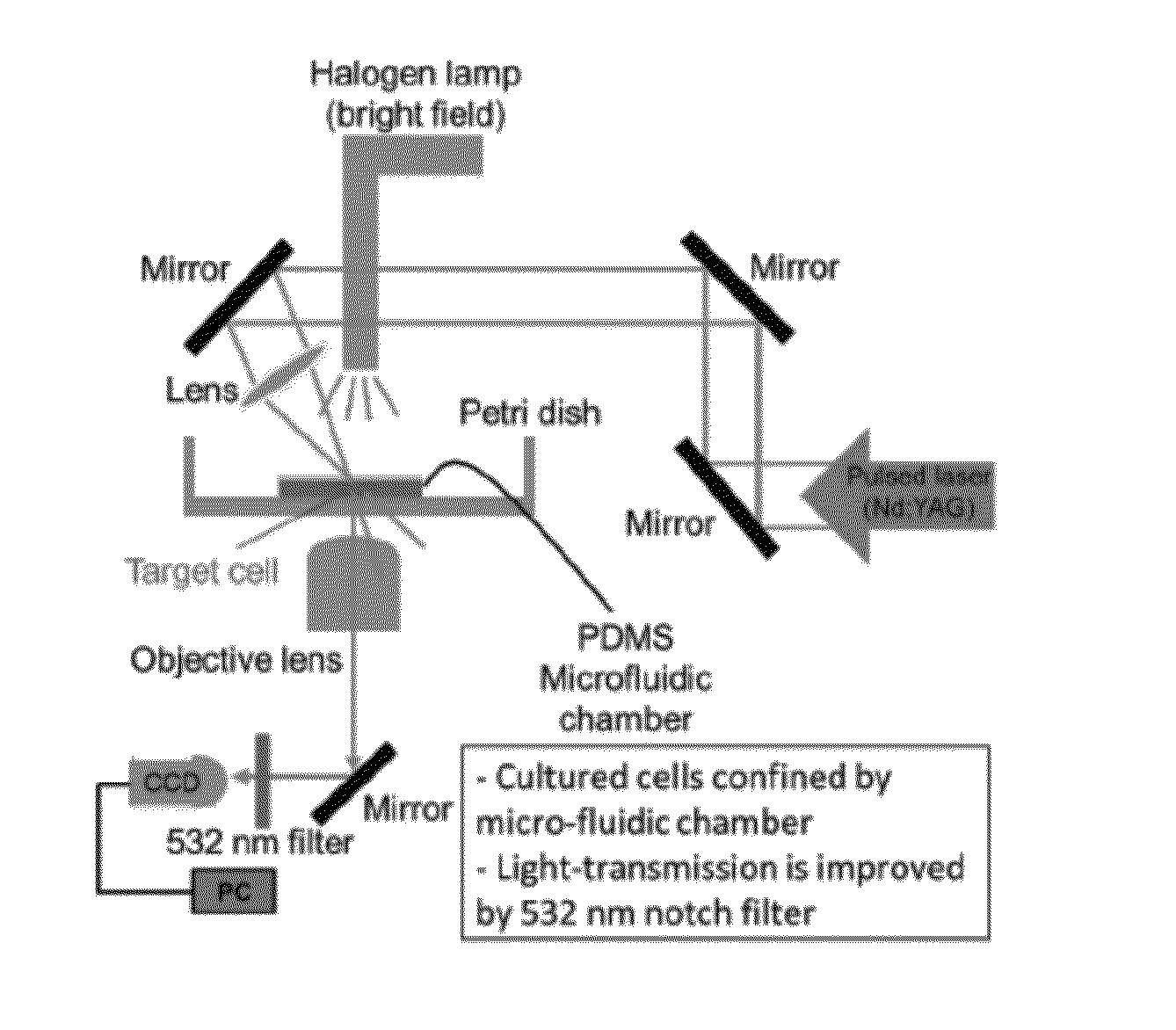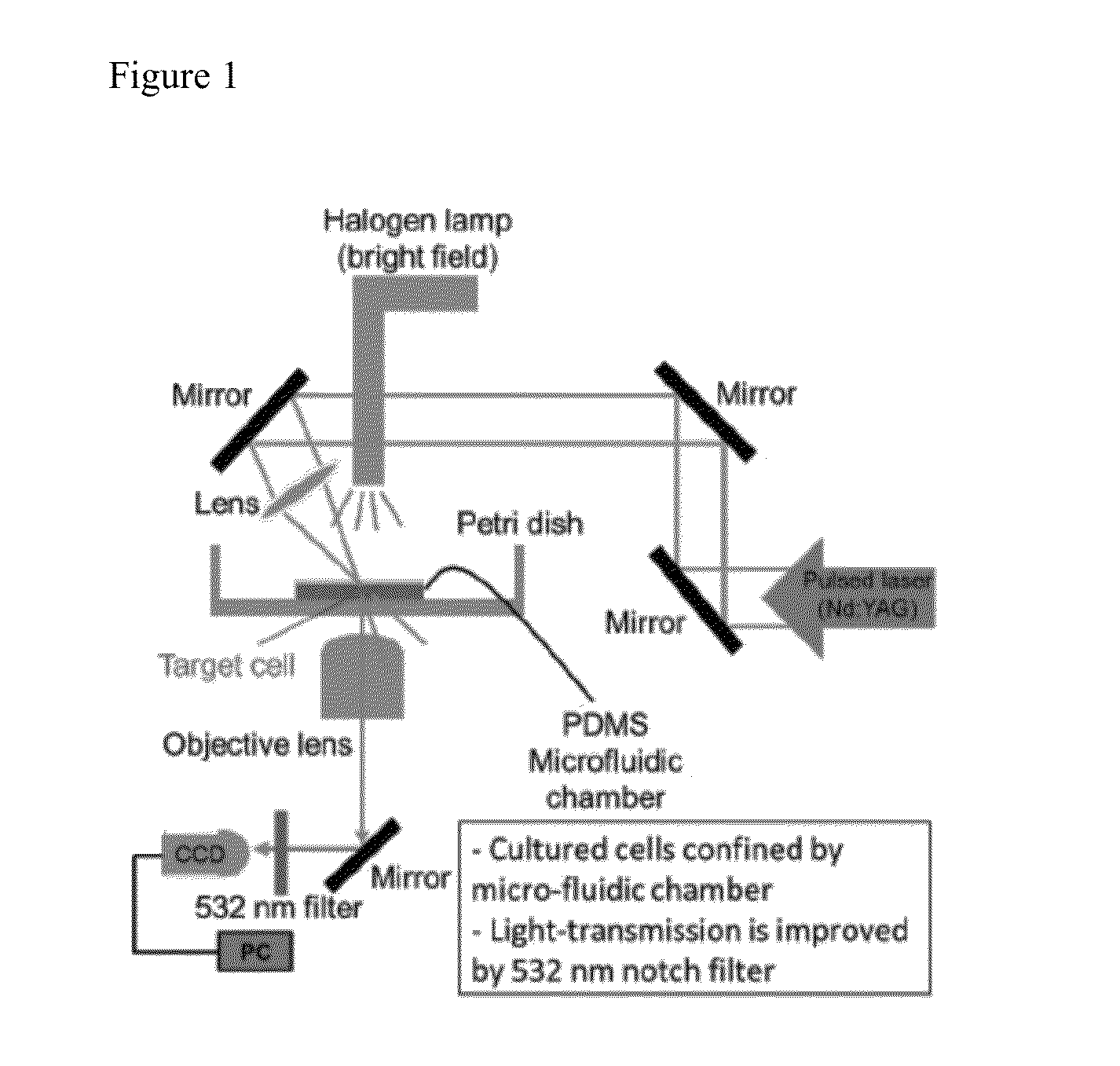Systems and methods for single cell isolation and analysis
a single cell and analysis technology, applied in the field of systems and methods for single cell isolation and analysis, can solve the problems of limited spatial resolution, inability to easily study the mechanism by conventional dish-based assays, and lack of the ability to retrieve a target single cell for further analysis
- Summary
- Abstract
- Description
- Claims
- Application Information
AI Technical Summary
Benefits of technology
Problems solved by technology
Method used
Image
Examples
example 1
Cell Detachment Mechanism and Fabrication of Microfluidic Platform
[0076]An exemplary cell detachment technology system is illustrated in the FIG. 1. To absorb the optical power and transform it to mechanical force for cell detachment, a two-layer substrate (shown in FIG. 2(a)) composed of a light absorbing material and a polymer layer was developed. The light absorbing layer transforms the optical energy to heat, and the generated heat leads to the expansion of a bubble trapped in PDMS. The quick (<1 μs) deformation of PDMS leads to a high shear stress, which detached the cells. Due to the high optical absorption characteristics of CNTs, a CVD (Chemical Vapor Deposited) CNT film was first investigated as a light absorbing layer. The SEM picture of the CNT film (˜6 μm) grown on the substrate is shown in the FIG. 3, before and after coating of a polymer (PDMS) layer. It was also demonstrated that a thin (10-200 nm) Au / Pd alloy film was be used as an alternative for a light absorbing l...
PUM
| Property | Measurement | Unit |
|---|---|---|
| thick | aaaaa | aaaaa |
| thickness | aaaaa | aaaaa |
| optical energy | aaaaa | aaaaa |
Abstract
Description
Claims
Application Information
 Login to view more
Login to view more - R&D Engineer
- R&D Manager
- IP Professional
- Industry Leading Data Capabilities
- Powerful AI technology
- Patent DNA Extraction
Browse by: Latest US Patents, China's latest patents, Technical Efficacy Thesaurus, Application Domain, Technology Topic.
© 2024 PatSnap. All rights reserved.Legal|Privacy policy|Modern Slavery Act Transparency Statement|Sitemap



